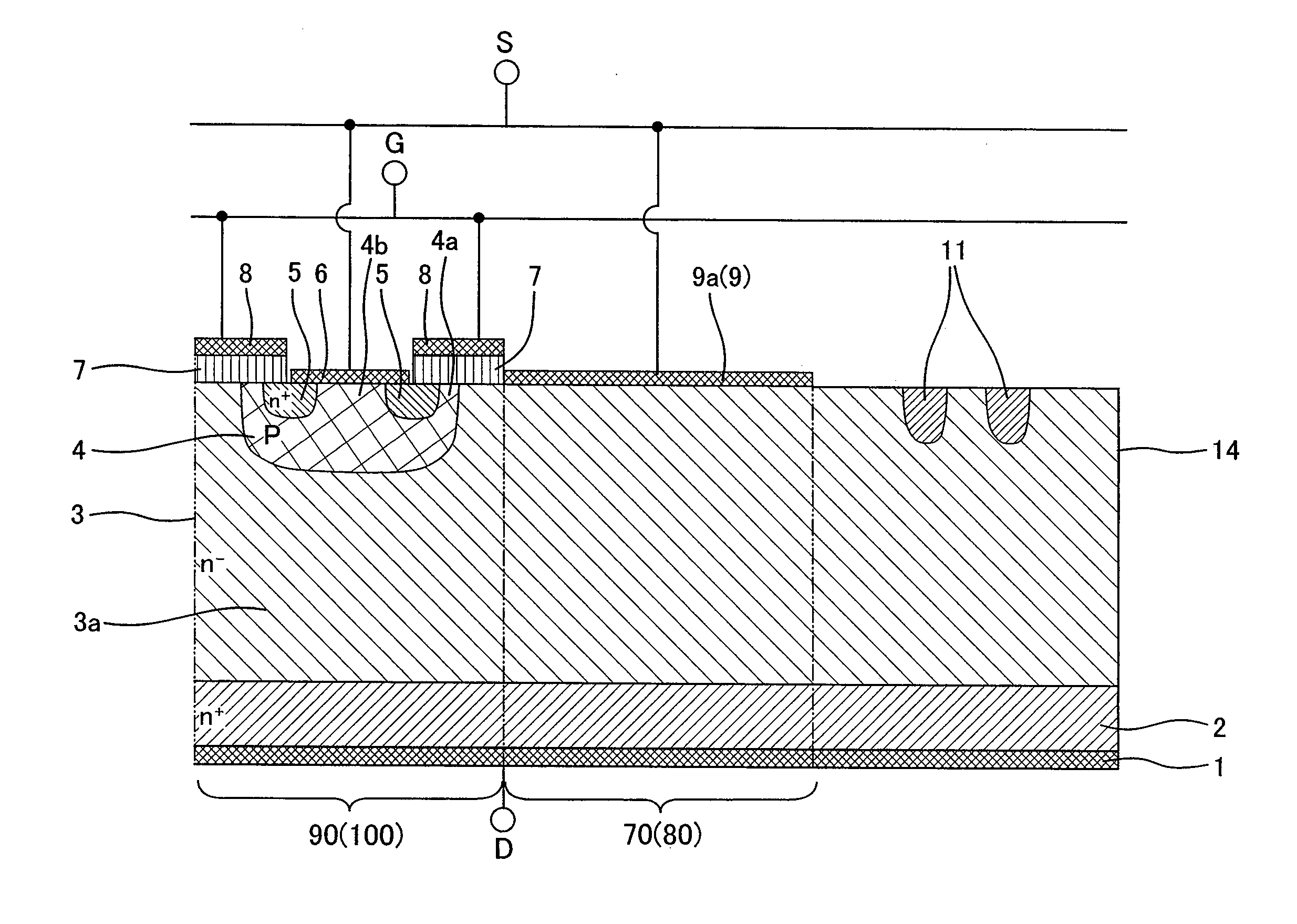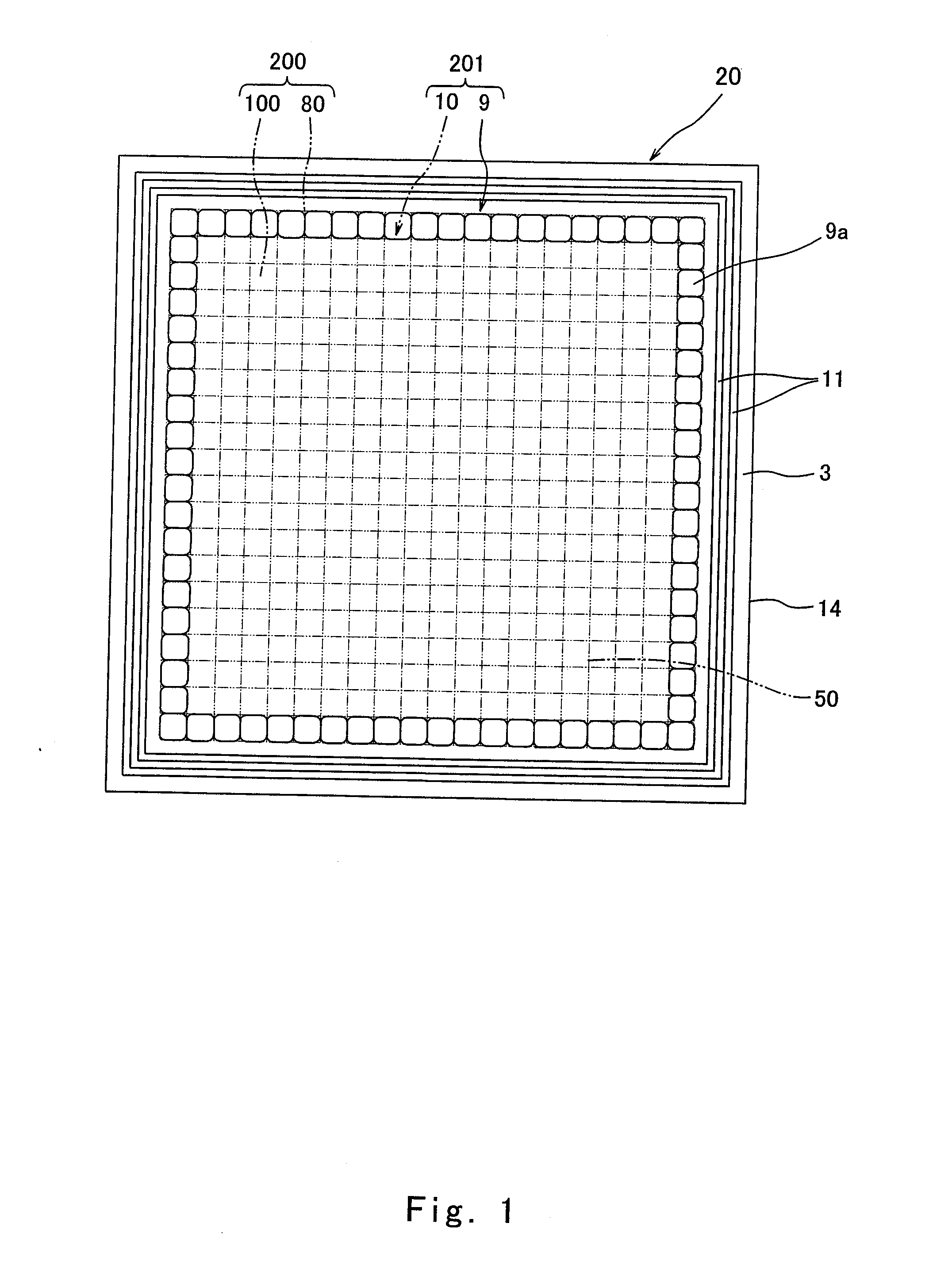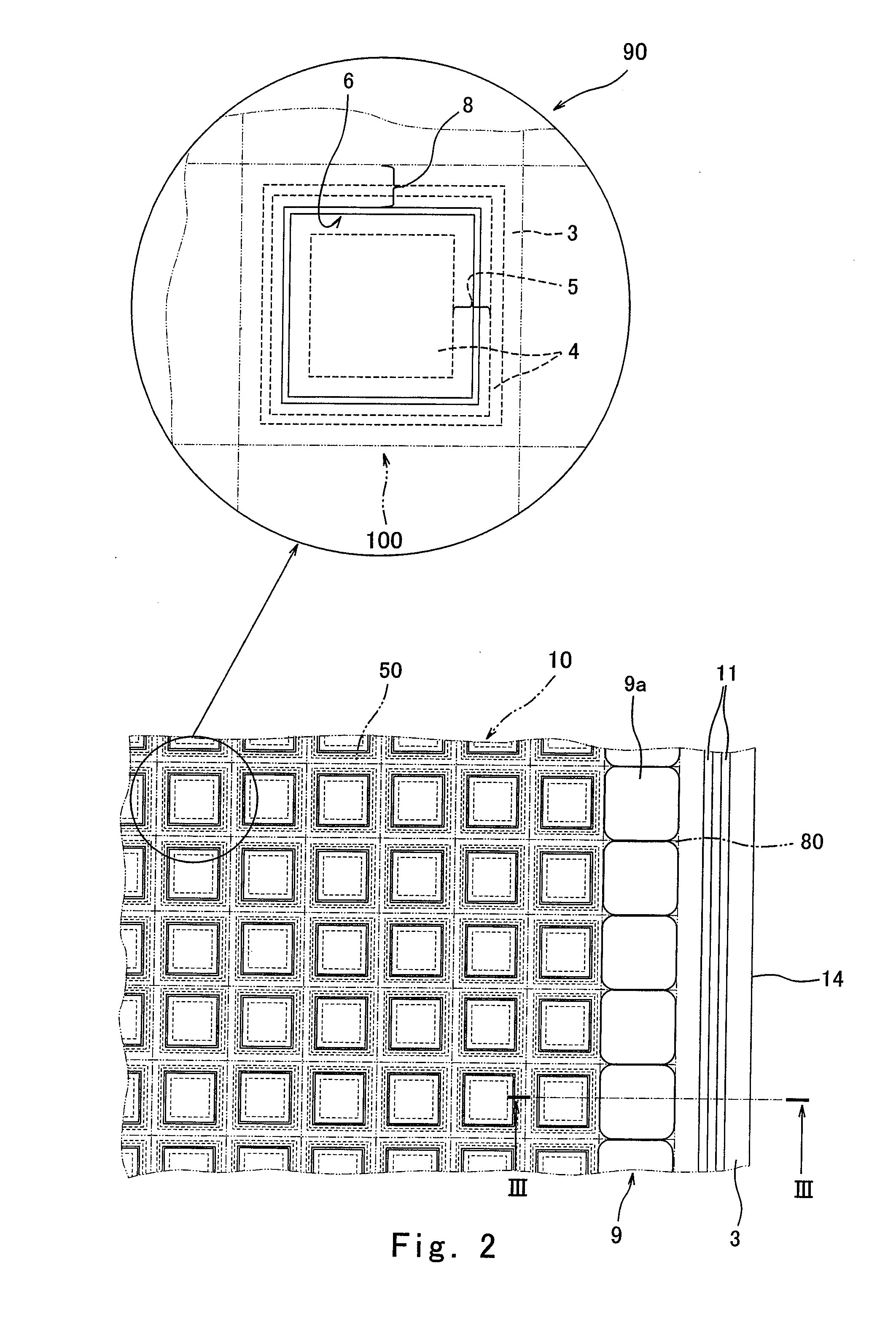Semiconductor element and electrical apparatus
- Summary
- Abstract
- Description
- Claims
- Application Information
AI Technical Summary
Benefits of technology
Problems solved by technology
Method used
Image
Examples
embodiment 1
[0097]FIG. 1 is a plan view showing the construction of a semiconductor element of Embodiment 1 of the present invention. FIG. 2 is a partial plan view enlarging part of the construction of the semiconductor element of FIG. 1. FIG. 3 is a partial cross-sectional view showing the construction of the semiconductor element of FIG. 1 in cross section, and is a cross-sectional view taken along line III-III of FIG. 2.
[0098]A semiconductor element of the present embodiment functions as a circuit in which a field effect transistor (hereinafter may be referred to as “MOSFET”) and a schottky diode are connected in parallel to each other, and is constituted of one IC chip in which a plurality of field effect transistors and a plurality of schottky diodes constituting the above circuit are integrated. For example, the semiconductor element of the present embodiment is used as a phase switching circuit 23 in an inverter circuit (see FIG. 5) for driving a three-phase motor. The number of field ef...
embodiment 2
[0177]Embodiment 2 of the present invention exemplifies an inverter circuit which incorporates therein an arm module (semiconductor device) using the semiconductor element 20 of Embodiment 1.
[0178]Arm Module
[0179]FIG. 4 is a plan view schematically showing the construction of the arm module as the semiconductor device according to Embodiment 2 of the present invention. In FIG. 4, the same reference numbers as in FIGS. 1 to 3 are used for the same or corresponding members, and explanations thereof are omitted.
[0180]As shown in FIG. 4, the arm module of the present embodiment includes the semiconductor element 20 of Embodiment 1 and a package having a drain electrode terminal 15, a source electrode terminal 16 and a gate electrode terminal 17.
[0181]The semiconductor element 20 is disposed on the drain electrode terminal 1 such that the drain electrode 1 is connected to an upper surface of the drain electrode terminal 15. The source schottky pads 12S of the semiconductor element 20 are...
embodiment 3
[0201]FIG. 6 is a plan view showing the construction of a semiconductor element of Embodiment 3 of the present invention. FIG. 7 is a partial plan view enlarging part of the construction of the semiconductor element of FIG. 6. In FIGS. 6 and 7, the same reference numbers as in FIGS. 1 and 2 are used for the same or corresponding members, and explanations thereof are omitted.
[0202]As shown in FIGS. 6 and 7, in the semiconductor element 20 of the present embodiment, the diode forming region 9 is constructed such that the schottky electrodes 9b which cover the upper surfaces of a plurality of diode cells 80 among the cells 200 defined by the lattice-like virtual border lines 50 in plan view are disposed so as to surround the outer periphery of the transistor forming region 10. Other than this point, the semiconductor element 20 of Embodiment 3 is the same as that of Embodiment 1.
[0203]Four schottky electrodes 9b are disposed so as to extend along the outer periphery of the transistor f...
PUM
 Login to View More
Login to View More Abstract
Description
Claims
Application Information
 Login to View More
Login to View More - R&D
- Intellectual Property
- Life Sciences
- Materials
- Tech Scout
- Unparalleled Data Quality
- Higher Quality Content
- 60% Fewer Hallucinations
Browse by: Latest US Patents, China's latest patents, Technical Efficacy Thesaurus, Application Domain, Technology Topic, Popular Technical Reports.
© 2025 PatSnap. All rights reserved.Legal|Privacy policy|Modern Slavery Act Transparency Statement|Sitemap|About US| Contact US: help@patsnap.com



